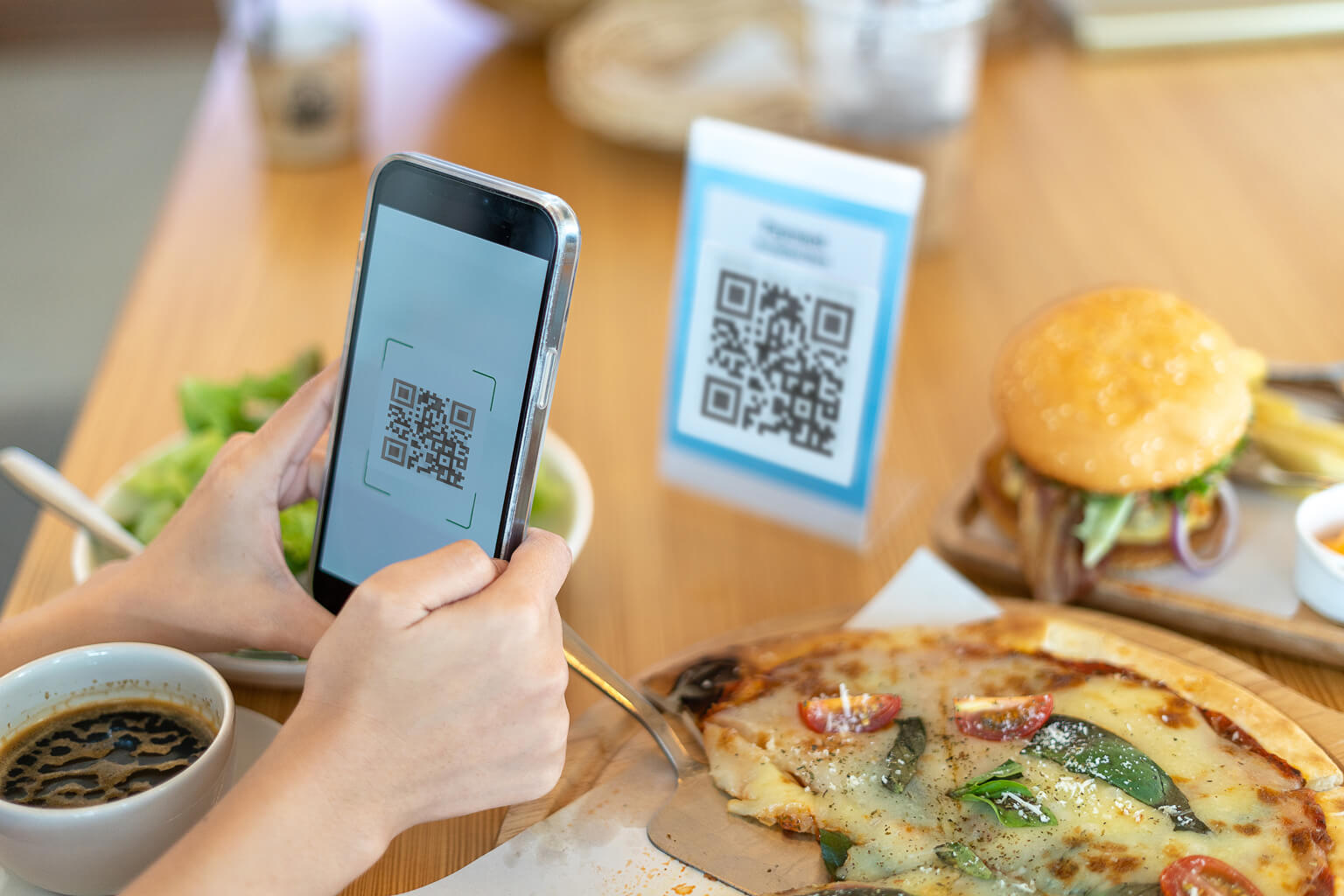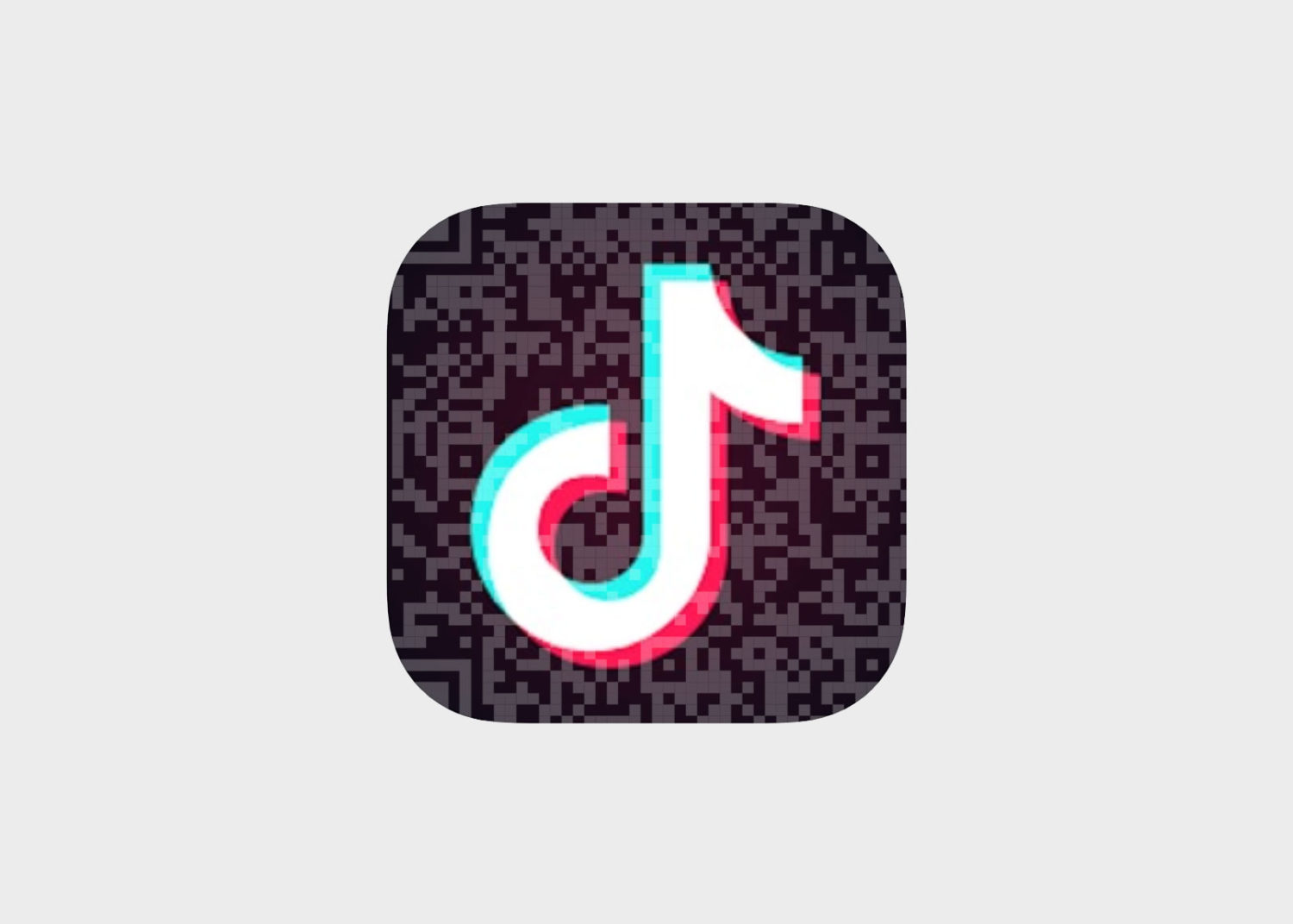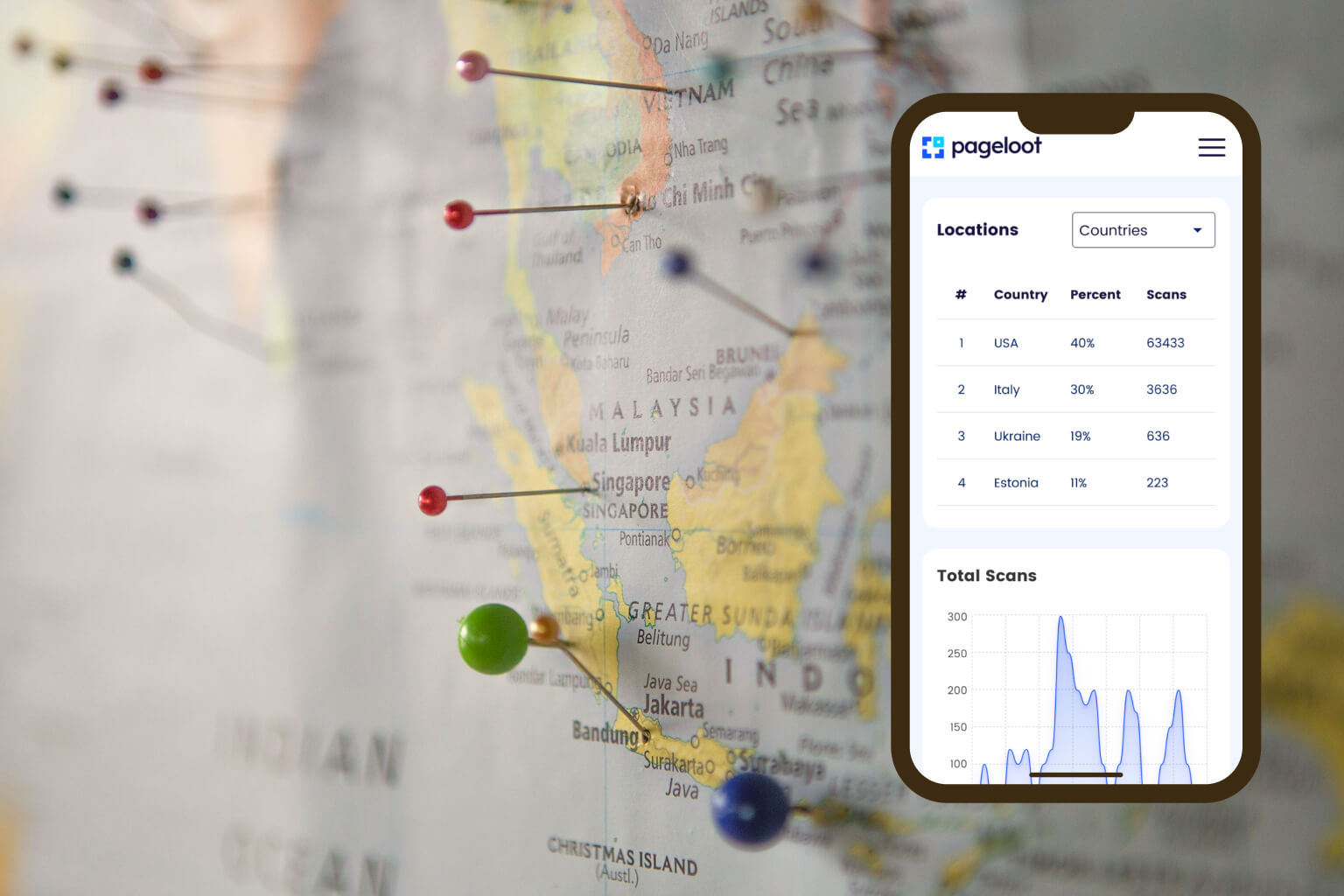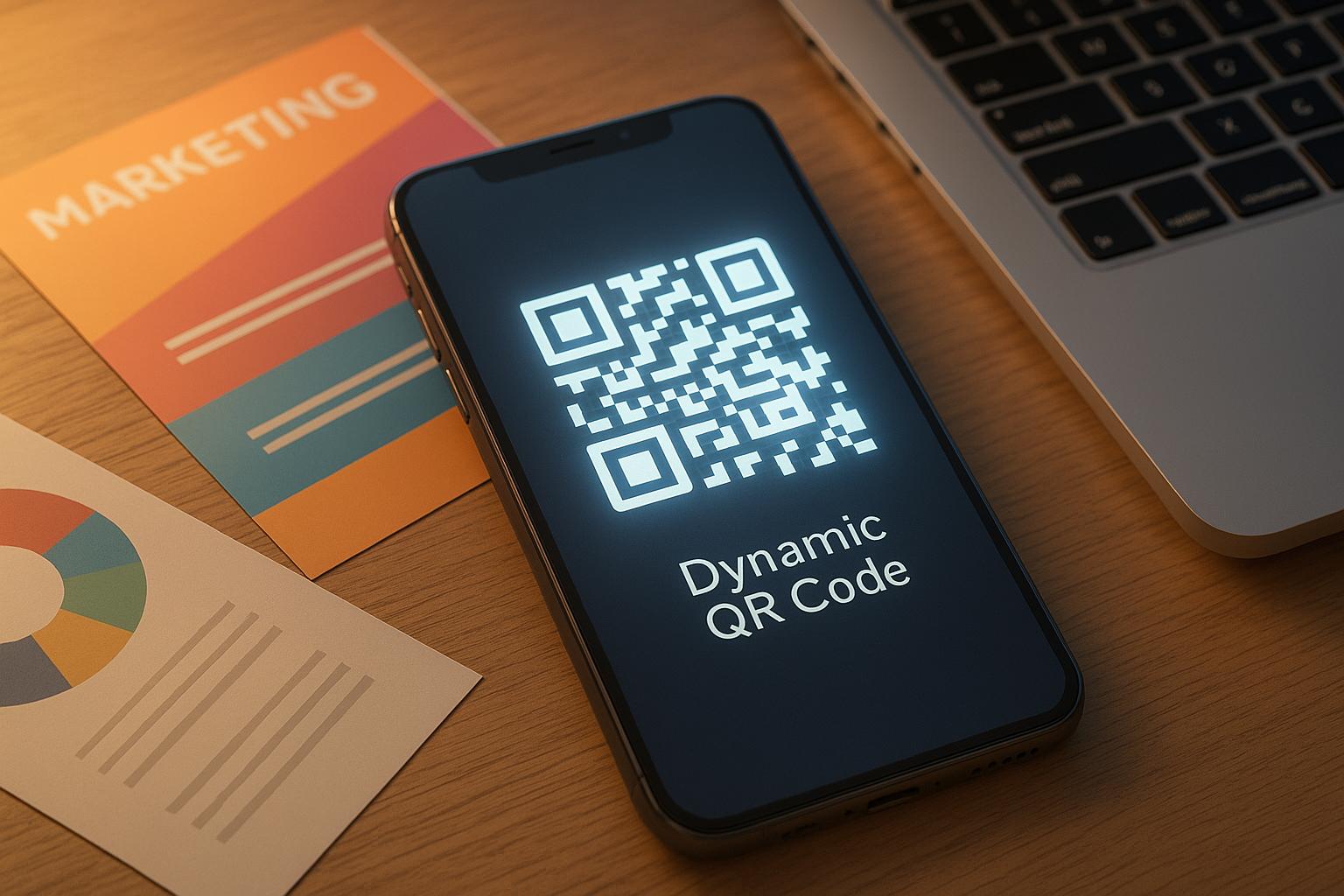QR codes are now a must-have for restaurants, helping streamline operations and improve customer experiences. Here’s a quick look at the 7 best QR code types for restaurant menus and how they can help your business:
- Dynamic QR Codes: Update menus in real-time without reprinting.
- Multi-Layered QR Codes: Offer personalized menus based on language, time, or location.
- Payment-Integrated QR Codes: Enable fast, contactless payments directly at the table.
- PDF QR Codes: Provide detailed food data like calorie counts and allergen info.
- Augmented Reality QR Codes: Show 3D previews of dishes for a more interactive experience.
- Loyalty Program QR Codes: Simplify rewards tracking and boost customer retention.
- Multi-Language QR Codes: Automatically display menus in the customer’s preferred language.
Why QR Codes Matter:
- 78% of diners prefer QR code menus.
- Restaurants using QR codes see up to 30% lower labor costs and 15% faster table turnover.
- The global QR code market is expected to hit $3.1 billion by 2025.
Quick Comparison
| QR Code Type | Best For | Cost Range | Customer Impact |
|---|---|---|---|
| Dynamic QR Codes | Menus with frequent updates | $5–$60/month | High – Always up-to-date |
| Multi-Layered QR Codes | Custom menus or language options | $17–$99/month | High – Personalized service |
| Payment-Integrated QR Codes | Faster table turnover and payments | $39–$169/month + fees | Very High – Quick checkout |
| Nutritional Information PDF QR Codes | Health-conscious diners | Free–$49/month | Medium – Transparency |
| Augmented Reality QR Codes | Upscale, interactive dining | $60–$490/year | Very High – Immersive |
| Loyalty Program QR Codes | Repeat customers and rewards | $35–$119/month | High – Builds loyalty |
| Multi-Language QR Codes | Diverse or international audiences | $7.99–$55/month | High – Accessibility |
Takeaway:
QR codes are cost-effective and cater to today’s demand for contactless, digital solutions. Whether you’re looking to save on printing, speed up payments, or provide more personalized experiences, there’s a QR code type that fits your restaurant’s needs. Start with one and expand as you see results!
1. Dynamic QR Codes for Real-Time Menu Updates

Functionality and Purpose
Dynamic QR codes have revolutionized how restaurants manage their menus by allowing instant updates without the hassle of reprinting. Unlike static QR codes that link to unchanging content, dynamic QR codes let restaurants modify menu items, prices, and descriptions in real time. This means that when customers scan the QR code, they always see the latest menu – perfect for adding seasonal dishes, adjusting prices due to market changes, or removing items that are out of stock. This feature is especially useful during busy seasons or when supply chain issues arise, giving restaurants the flexibility to adapt quickly.
Seamless Integration with Restaurant Systems
Dynamic QR codes work effortlessly with existing restaurant tools like POS systems, mobile apps, and online ordering platforms. This ensures that any menu changes are instantly reflected across all customer-facing platforms. To make the transition smooth, it’s essential to choose a reliable provider with proven integration capabilities and strong support. Staff training and clear communication with customers – through signage, social media updates, or table displays – can further streamline the process. This level of integration not only simplifies operations but also improves the overall dining experience.
Enhancing the Customer Experience
Using dynamic QR codes ensures diners always have access to accurate, up-to-date menu information. Whether it’s current pricing, detailed descriptions, or availability, customers no longer need to wait for a server to confirm details. For example, integrated ordering systems like Toast Mobile have shown to increase check sizes by 9% compared to traditional dine-in methods. Additionally, digital menus can include valuable extras like nutritional details, allergen warnings, and ingredient lists that adjust as recipes change, fostering greater trust and transparency with customers.
Cost Savings and Easy Maintenance
Dynamic QR codes also bring significant cost savings by eliminating the need for constant reprinting. Since paper manufacturing accounts for 4% of global energy consumption, switching to digital menus is not only economical but also better for the environment. A great example is Marriott Aruba, which saved around $150,000 by cutting back on printing expenses. Subscriptions for dynamic QR code services are budget-friendly, ranging from $3.99 to $15.00 per month or $60 to $150 annually, depending on features and scan volumes. Managing the system is straightforward, thanks to web-based dashboards that make updates simple. Plus, the built-in analytics help restaurants fine-tune their marketing strategies and gain insights into customer preferences.
2. Multi-Layered QR Codes for Menu Customization

Functionality and Purpose
Multi-layered QR codes take the concept of dynamic updates a step further, offering a personalized touch to the dining experience. These codes can store multiple links and automatically redirect customers based on factors like language, time, or location. This eliminates the need for multiple QR codes cluttering the table, streamlining the process for both customers and staff. For instance, language redirection ensures that international diners can view menus in their preferred language. Similarly, time-based redirection can display breakfast options in the morning and switch to dinner menus later in the evening, creating a tailored and efficient experience for guests.
Ease of Integration with Restaurant Systems
Beyond personalization, multi-layered QR codes integrate seamlessly with restaurant systems, enhancing overall efficiency. To ensure this, restaurants need to verify that their current POS systems are compatible and offer open APIs for smooth data transfer. Platforms like Lightspeed demonstrate how effectively these codes can work with existing setups. However, proper staff training is essential to assist customers who may still prefer traditional menus. This combination of advanced technology and human support ensures a smooth transition, improving both customer satisfaction and operational workflows.
Customer Experience Improvement
Contactless ordering has become increasingly popular among diners, and multi-layered QR codes significantly elevate this experience. By offering language options, these codes remove communication barriers, allowing customers to fully understand menu details like descriptions, ingredients, and pricing. Time-sensitive promotions also become possible – for example, a restaurant could offer a 5% discount for scans at 9:00 AM or a 10% discount at noon. Additionally, customers can customize their orders, specifying dietary preferences or modifications without needing to involve a server. This level of convenience enhances the overall dining experience.
Moreover, these QR codes are a valuable tool for gathering customer data. When integrated with CRM systems, they provide insights into preferences and behaviors, enabling restaurants to craft targeted marketing campaigns and offer personalized menu suggestions. This data-driven approach not only boosts customer satisfaction but also encourages repeat visits by delivering experiences tailored to individual needs.
3. Payment-Integrated QR Codes for Tableside Transactions

Functionality and Purpose
Payment-integrated QR codes transform smartphones into powerful payment tools. With a quick scan, diners can access their bill, select a payment method (like credit cards or Apple Pay), split the check, and even leave a tip – all in seconds. Once the payment is complete, the system sends a digital receipt directly to the customer’s phone and updates the restaurant’s POS system in real time.
This tech meets a growing demand for convenience. Surveys reveal that nearly 70% of diners prefer faster, contactless payment options, and a similar percentage are drawn to QR code payments specifically. Security is another key factor, with 42.55% of consumers feeling most comfortable using QR codes to pay at restaurants, bars, or cafés.
Seamless Integration with Restaurant Systems
For restaurants, the key to success lies in choosing a payment platform that integrates effortlessly with their existing systems, often through open APIs and proven compatibility.
Take Alpine Inn in California as an example. By adopting Toast Mobile Order & Pay™, the restaurant boosted its average check size by 45% and processed over $100,000 in weekly orders – accounting for nearly 90% of their on-premise dining volume. Similarly, New England Lobster Market & Eatery saw tipping amounts more than double after implementing the same system, which also helped with staff retention due to increased earnings.
However, smooth implementation requires proper staff training. Employees should be ready to assist less tech-savvy guests and handle any hiccups. Café Gratitude is a great case study. After introducing QR code payments, they increased the number of tables each server could manage from 7–8 to 12–15, allowing staff to focus more on customer service rather than payment logistics.
Enhancing the Customer Experience
QR code payments tackle several common frustrations. For instance, nearly 50% of U.S. consumers worry about the cleanliness of signature touchpads, and 72% would rather skip signing altogether. The speed and ease of QR code payments not only address these concerns but also improve the overall dining experience.
Turning Point Restaurant demonstrates how this technology can go beyond payments. By prompting customers to enter their email addresses during the payment process, they’ve achieved a 10% opt-in rate for their loyalty program. As founder and CEO Kirk Ruoff puts it:
"We’re getting about a 10% opt-in rate on that, which, from a marketing standpoint is really nice."
These small but meaningful customer interactions contribute to smoother operations and better engagement.
Cost Savings and Maintenance
QR codes are a cost-effective solution that reduces labor expenses and speeds up table turnover, delivering a strong return on investment.
They also eliminate the need for pricey card readers at every table, cutting down equipment costs. The broader market outlook is promising as well: the global QR code payment market, valued at $11 billion in 2023, is projected to grow at an annual rate of 16.5%, reaching over $52 billion by 2032.
A practical example comes from CUPP, a bubble tea franchise. In April 2025, they streamlined their operations by integrating QR codes with their digital menus and POS systems using Nory. This upgrade allowed for real-time sales tracking, improved staff scheduling, and more efficient inventory management, significantly boosting their overall efficiency.
4. Nutritional Information QR Codes for Health-Conscious Dining

Functionality and Purpose
Nutritional information QR codes offer health-conscious diners a simple way to access detailed food data directly on their smartphones. By scanning these codes, customers can instantly view nutritional facts, ingredient lists, calorie counts, and allergen warnings for each menu item. For example, a quick scan can reveal a dish’s sodium content or whether it contains common allergens.
The push for transparency in dining is undeniable. Around 60% of consumers prefer products with QR codes that provide easy access to nutritional and safety information. In fact, over the past year, more than 60% of U.S. consumers have used QR codes to gather food-related details. Major brands like McDonald’s and Starbucks have already embraced this trend. Beyond basic nutritional data, these codes can also provide insights into ingredient sourcing and dietary compliance, helping restaurants build trust with their customers while enabling informed choices. This approach fits seamlessly with other advancements in digital menus.
Ease of Integration with Restaurant Systems
Implementing nutritional QR codes starts with ensuring each code links to accurate and regularly updated information for every menu item. This means creating detailed nutritional profiles, including ingredients, allergen details, and calorie counts. Training staff to assist diners with QR code use can further enhance the experience.
To make scanning easy, place QR codes in prominent, accessible locations with clear instructions, such as "Scan for nutritional details." Restaurants can even design specialized menu sections accessible through a single QR code, catering to dietary needs like gluten-free, vegan, or low-sodium diets. Regularly testing codes across different smartphone models and ensuring secure, up-to-date URLs are key to seamless integration. This level of transparency complements other digital innovations, like payment-integrated QR code systems.
Customer Experience Improvement
Nutritional QR codes meet the growing demand for dining transparency. Instead of relying on server explanations, diners can quickly scan a code to get the detailed information they need to stick to dietary goals or avoid allergens. This is especially valuable for those with specific dietary requirements or food allergies, offering them peace of mind and confidence in their choices. With 56% of consumers preferring QR codes to access restaurant menus, providing this level of detail can improve satisfaction and encourage repeat visits.
Cost-Effectiveness and Maintenance
Switching to nutritional QR codes can save money by reducing the need for frequently updated printed menus. Digital updates eliminate printing costs and cut down on paper waste.
To keep the information accurate, restaurants should establish regular update schedules – whether weekly, bi-weekly, or monthly – and have a system for quick adjustments, such as when suppliers change or new seasonal items are added. While free QR code generators are available, investing in a paid solution often provides access to advanced features like analytics and custom branding. Choosing the right QR code platform ensures a good return on investment while meeting customer expectations for transparency.
5. Augmented Reality QR Codes for Food Previews
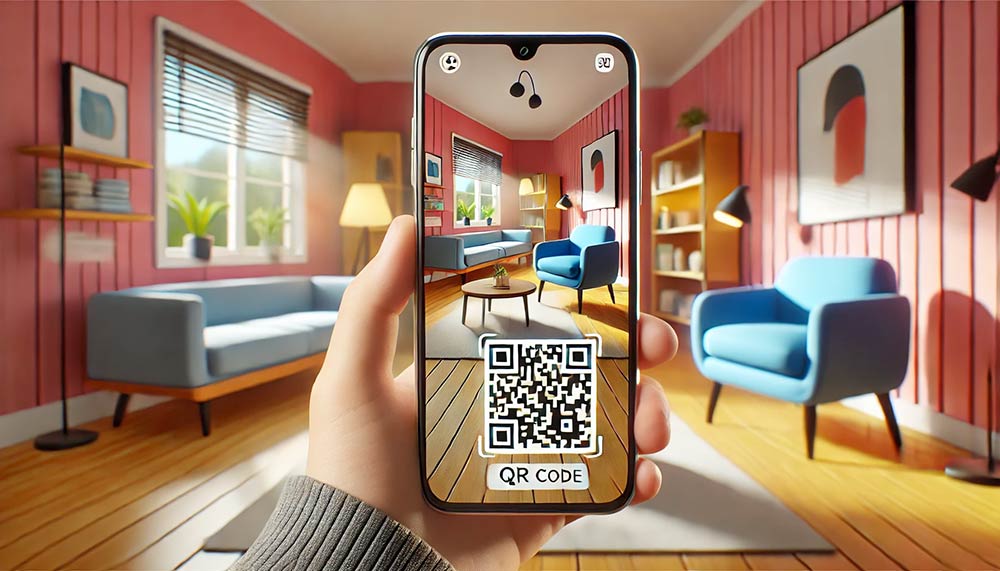
Functionality and Purpose
AR QR codes bring menus to life by offering 3D previews of dishes, making the ordering process more interactive and visually appealing. When customers scan these codes, they can view realistic, interactive images that showcase a dish’s appearance, portion size, and ingredients.
These previews not only enhance the ordering experience but also help diners make more confident choices. For example, Magnolia Bakery in New York City uses AR technology to display virtual cakes and other products, giving customers a chance to explore their options before buying. Domino’s Pizza takes it a step further with their app’s Pizza Chef feature, allowing users to customize and visualize pizzas in 3D before placing an order.
By offering a virtual look at menu items, AR QR codes can encourage diners to step out of their comfort zones and try something new. Additionally, AR menus can provide personalized details, such as ingredient lists and nutritional information, catering to dietary needs and preferences. This technology blends seamlessly with existing digital menus, creating a more engaging dining experience.
Ease of Integration with Restaurant Systems
Integrating AR QR codes into restaurant operations is simpler than it might seem. Using AR software, restaurants can create 3D models of their dishes and link them directly to QR codes. These codes can then be embedded into physical menus, websites, and marketing materials.
One major advantage of dynamic QR codes is that they allow for real-time updates without the need to reprint menus. When paired with POS systems, they can streamline ordering and kitchen processes. To ensure a smooth experience, restaurants should also focus on designing mobile-friendly menu pages that load quickly and are easy to navigate. Training staff to assist customers with AR features and keeping menu content up-to-date are also key steps.
Customer Experience Improvement
Once implemented, AR QR codes can significantly enhance the dining experience. Instead of guessing what a dish might look like, diners can see detailed visuals of their order, including accurate portion sizes. This reduces ordering errors and boosts overall satisfaction.
AR technology appeals especially to younger diners. Studies show that 63% of consumers remember AR experiences more vividly, and mobile AR usage is expected to hit 1.7 billion users by 2024. For restaurants, AR menus can generate buzz and attract Gen Z diners, who tend to dine out less frequently than older generations. Plus, the interactive and shareable nature of AR menus often leads to social media moments, as customers post their experiences online.
Cost-Effectiveness and Maintenance
Although the initial setup of AR QR codes requires an investment, the long-term benefits often outweigh the costs. By increasing customer engagement and encouraging word-of-mouth promotion, this technology can lead to higher sales over time.
The cost of implementation depends on factors like the complexity of 3D models and the number of menu items. Smaller restaurants may face higher relative costs and a steeper learning curve, but working with experienced AR developers can help control expenses while delivering a user-friendly system.
Ongoing maintenance involves updating 3D models as menu items change and ensuring compatibility across different smartphones. High-quality 3D modeling is crucial for showcasing dishes effectively and keeping customers engaged. Rather than treating AR QR codes as a one-time gimmick, restaurants should view them as a dynamic tool that evolves with their menu and customer needs.
sbb-itb-74874c9
6. Loyalty Program QR Codes for Customer Retention
Loyalty program QR codes are transforming how restaurants build lasting relationships with their customers. By offering instant rewards and simplifying the process, these codes make it easier for diners to stay engaged and keep coming back.
How They Work
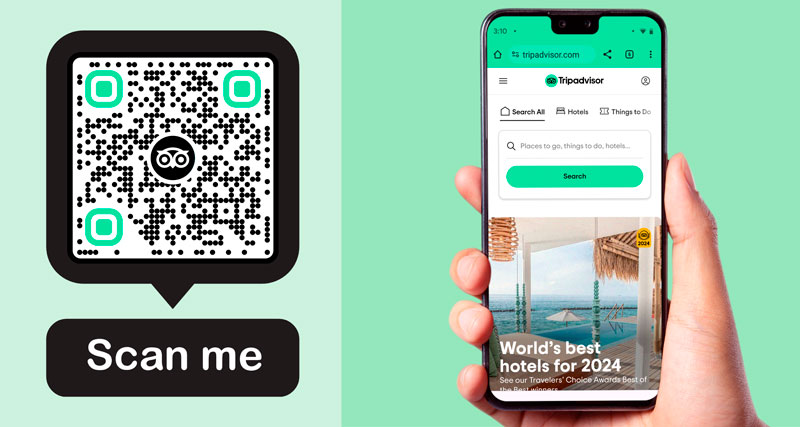
Loyalty program QR codes make connecting with customers more efficient by giving them instant access to rewards with a simple scan. These codes eliminate the need for physical cards or extra apps, letting diners sign up, track points, and redeem perks on the spot.
When scanned, these QR codes take customers to a loyalty dashboard where they can see their rewards, track their progress, and find out how close they are to their next benefit. For restaurants, this technology provides valuable insights into customer preferences and habits, enabling tailored marketing efforts that encourage repeat visits.
Some systems go a step further by integrating directly with payment platforms. This means points are automatically tracked when customers pay, and joining a loyalty program becomes as easy as clicking a button. This streamlined process creates a smoother experience for both customers and staff.
Another standout feature is instant feedback. Restaurants can use loyalty QR codes to collect reviews and address concerns quickly. Considering that 74% of customers read multiple reviews before deciding where to eat, this feedback loop plays a major role in maintaining a strong reputation and attracting new diners.
Seamless Integration with Restaurant Systems
Integrating loyalty program QR codes into a restaurant’s existing systems can feel like a big task, but the operational benefits are worth it. The trick is to choose a platform that works smoothly with your POS system. This ensures that orders placed via QR codes are processed without creating extra work for staff.
Big brands have already embraced similar systems. For example, a leading hotel chain uses QR codes across its properties to give guests access to digital services, menus, and local recommendations directly from their phones.
For restaurants, integration usually involves connecting QR codes with POS and CRM systems to track spending and rewards. A good platform will also provide detailed insights into customer behavior, such as how often they visit or what they like to order, allowing you to create targeted promotions that drive loyalty.
Staff training is a key part of the process. Team members need to know how these systems work, from linking QR codes to digital menus to managing orders that come through the platform. It’s also smart to set up a support channel for customers who might have trouble scanning or navigating the system.
Enhancing the Customer Experience
Loyalty program QR codes put diners in control of their experience. Instead of waiting for staff to explain rewards or manually track points, customers can instantly check their status and redeem perks with a quick scan.
The contactless nature of these programs is especially appealing today. Over half of U.S. diners say that a smooth, contactless payment experience influences whether they return to a restaurant. QR code loyalty systems meet this demand while also simplifying reward tracking.
Because these programs are mobile-friendly, customers can easily monitor their progress, redeem points, and enjoy personalized offers right on their phones. This convenience encourages more frequent use compared to traditional card-based systems.
The personalization aspect takes things further. Restaurants can offer promotions and deals tailored to individual preferences and dining history. By combining convenience with customization, QR codes strengthen a restaurant’s commitment to providing a modern, tech-forward experience.
Costs and Maintenance
Setting up loyalty program QR codes comes with some upfront costs, but the return on investment often makes it worthwhile. Expenses include QR code creation, platform fees, POS integration, and initial marketing efforts.
Restaurants can choose between static QR codes, which are free but can’t be updated, and dynamic QR codes, which require a paid platform but allow for real-time updates. Dynamic codes are generally better for loyalty programs because they let restaurants adjust promotions or redirect links without reprinting materials.
Free solutions often lack advanced features, while paid platforms offer more robust options, such as seamless integration with loyalty systems and detailed analytics.
Regular maintenance is essential to keep the program running smoothly. This includes updating digital content, testing QR codes on different devices, and ensuring they work in various lighting conditions.
The benefits of this technology are clear. In 2021, 96% of UK respondents reported scanning QR codes in restaurants or stores over a six-month period. This shows the widespread appeal of QR codes and their potential to boost loyalty program participation and customer retention.
7. Multi-Language QR Codes for Diverse Customer Bases

Multi-language QR codes are a game-changer for restaurants looking to connect with international diners and non-native speakers. These smart codes automatically detect a user’s device language settings, directing them to menu content in their preferred language.
Functionality and Purpose
Here’s how it works: when a customer scans the QR code, it identifies their device’s language settings and displays the menu in that language. If needed, diners can manually switch to another language option. This technology bridges the communication gap, especially in areas with diverse populations.
Take New York, for example. Nearly half (49.4%) of residents speak a language other than English at home, while only 23% of Americans are bilingual. Multi-language QR codes help restaurants cater to these varied linguistic needs, making dining a smoother experience for all.
These QR codes support up to 221 locales, giving restaurants the ability to serve a wide range of communities, from tourists and immigrants to business travelers. The best part? Incorporating these codes into existing systems is refreshingly simple.
Ease of Integration with Restaurant Systems
Adding multi-language QR codes to your restaurant setup doesn’t require a major overhaul. The process is straightforward: choose a QR code generator with multilingual support, input the URLs or landing pages for each language, and customize the design to align with your branding.
Restaurants can use these codes for different formats, like website links, landing pages, or PDF menus, depending on their needs. The key is ensuring that all language versions are properly translated and culturally relevant.
A great example is Wicked Bao in Fernandina Beach, Florida. By implementing a menu that automatically adapts to a customer’s preferred language, they significantly improved the dining experience for their international student clientele.
To maximize accessibility, restaurants should provide basic staff training and strategically place QR codes on tables, menus, receipts, and entry points.
Customer Experience Improvement
For international guests or non-native speakers, multi-language QR codes make dining far more enjoyable. Instead of struggling with unfamiliar terms or translation apps, customers can instantly view the menu in their own language.
The convenience is undeniable. Switching between languages is seamless, allowing diners to fully understand menu items, ingredients, and prices. This is especially valuable in tourist-heavy areas or multicultural neighborhoods where restaurants serve a variety of linguistic groups.
Digital menus also eliminate the need for multiple printed versions, enabling real-time updates and consistent multilingual support. This aligns perfectly with the growing trend of dynamic, personalized digital menus.
By reducing language barriers, these codes also cut down on ordering mistakes and miscommunication. When customers clearly understand their options, they’re more likely to order confidently and leave satisfied. Plus, restaurants save on printing costs while delivering a better overall experience.
Cost-Effectiveness and Maintenance
From a cost perspective, multi-language QR codes are a smart alternative to traditional multilingual menus. Printed menus come with high upfront costs and ongoing expenses for updates. Digital QR menus, on the other hand, eliminate these issues while offering greater flexibility.
Innovo Kitchen in Latham, NY, highlighted the benefits of QR code menus, saying:
"With QR codes, the customers will always see an up-to-date menu of what is available."
This real-time functionality is particularly helpful when managing menus in multiple languages.
Maintaining these codes is simple but essential. Restaurants should regularly test the codes on various devices and browsers to ensure smooth operation. Any updates to menu content must be synchronized across all language versions to avoid confusion.
For restaurants looking to grow their international customer base, the scalability of multi-language QR codes is a major advantage. Adding new languages or updating translations is quick and doesn’t disrupt service. This adaptability allows restaurants to respond to shifting demographics or seasonal tourist trends with ease.
QR Code Features and Benefits Comparison
Selecting the right QR code for your restaurant boils down to understanding your specific needs, budget, and the preferences of your customer base. Each type brings its own advantages, varying in complexity, cost, and how it impacts your operations and customer experience.
| QR Code Type | Primary Function | Integration Difficulty | Cost Range | Customer Impact | Best For |
|---|---|---|---|---|---|
| Dynamic QR Codes | Allows real-time menu updates without reprinting | Low | $5–$60/month | High – Always updated menus | Restaurants with frequent menu changes |
| Multi-Layered QR Codes | Enables order customization and special requests | Medium | $17–$99/month | High – Personalized ordering experience | Fine dining and custom meal services |
| Payment-Integrated QR Codes | Supports direct mobile payments at the table | High | $39–$169/month + transaction fees | Very High – Faster checkout | High-volume restaurants needing quicker table turnover |
| Nutritional Information QR Codes | Provides detailed ingredient, allergen, and nutritional info | Low | Free–$49/month | Medium – Appeals to health-conscious diners | Health-focused and allergen-aware establishments |
| Augmented Reality QR Codes | Offers interactive food previews | Very High | $60–$490/year | Very High – Engaging and immersive experience | Upscale restaurants and tech-savvy brands |
| Loyalty Program QR Codes | Tracks points and enables rewards redemption | Medium | $35–$119/month | High – Boosts customer retention | Businesses focused on repeat customers |
| Multi-Language QR Codes | Automatically detects language and switches menus | Low | $7.99–$55/month | High – Accessible for international diners | Restaurants in tourist hubs or diverse communities |
QR codes are transforming how restaurants operate, and this comparison helps align technology with your dining strategy. The table highlights a broad range of options, from free solutions to premium services costing up to $169 per month. While some QR codes, like dynamic ones, are easy to integrate, others – like payment-integrated or augmented reality codes – demand more technical setup, including linking to POS systems and payment gateways.
Customer preferences also play a significant role. According to research, 78% of diners enjoy using QR codes for menus and ordering. Among younger demographics, their popularity is even higher: 68% of Gen Z diners and 78% of millennials have used QR code menus. This makes advanced QR features particularly appealing to these groups.
For restaurants aiming to improve table turnover, payment-integrated QR codes are a game changer. They streamline the checkout process, which is crucial for boosting revenue. In fact, 75% of U.S. restaurant operators now consider contactless ordering or digital payment solutions essential for daily operations.
If you’re just starting with QR codes, dynamic QR codes offer a practical and straightforward option. They’re easy to use and provide real-time engagement tracking. On the other hand, restaurants looking to elevate their dining experience might explore augmented reality or multi-layered QR codes.
Multi-language QR codes are another smart choice for restaurants in diverse areas, offering an affordable way to cater to international customers and improve accessibility.
Finally, always test your QR codes across different devices to ensure a seamless experience for your customers. A little extra effort here can make a big difference in delivering the results you’re aiming for.
Conclusion
QR codes are reshaping the dining experience, offering a mix of convenience, efficiency, and revenue growth. For restaurants, the numbers speak volumes: adopting QR code ordering can cut labor costs by up to 30%, boost table turnover rates by as much as 25%, and significantly enhance profitability. These benefits make QR codes a practical and forward-thinking choice for modern restaurant operations.
The customer experience gains are equally striking. With 56% of diners preferring QR codes for menus and over 70% appreciating the ease of contactless options, these tools align seamlessly with today’s dining preferences. Real-world examples back this up. Shinya Ramen in Chicago, for instance, saw a 17% increase in average order size and a 20% jump in table turnover after adopting QR code ordering.
"With QR code ordering, a waitress who waited 3 tables before can now wait 10 tables and maintain the quality interaction with customers at the same time." – Zhichao of Xiang’s Hunan Kitchen, Boston, MA
This technology not only improves efficiency but also allows staff to focus on meaningful customer interactions. By streamlining operations and providing valuable data for personalized marketing, QR codes help restaurants cut costs without compromising service quality. The result? Stronger customer relationships and an elevated dining experience.
Choosing the right QR code solution is key. If your menu changes often, dynamic QR codes offer the flexibility to keep up. For fast-paced environments, payment-integrated QR codes can speed up table turnover. Restaurants catering to diverse audiences might prioritize multi-language options, while health-focused establishments can provide nutritional details through QR codes.
The demand for digital solutions is undeniable, and the potential financial gains are hard to ignore. Start small – pick a QR code type that addresses your biggest challenge. As you see results, expand your use of this technology. Customers are already on board with digital menus, so the real question is: which QR code solution will make the biggest difference for your restaurant?
FAQs
How can restaurants make sure their systems work with dynamic QR codes?
To make the most of dynamic QR codes, restaurants need systems that work effortlessly with their current Point-of-Sale (POS) and technology platforms. Look for options that allow you to update menu content in real time – without needing to create a new QR code every time.
Additionally, choose platforms that support dynamic QR codes on a range of devices, making updates and customization simple. It’s a good idea to regularly test the QR codes on various smartphones to ensure they work smoothly for all customers. Keeping your software up to date is another essential step to avoid compatibility issues. With these practices in place, restaurants can ensure their QR codes function effectively and elevate the overall dining experience.
What challenges might restaurants face when using QR codes for payments?
Using QR codes for payments in restaurants isn’t without its hurdles. For starters, some customers – particularly those who aren’t as comfortable with technology – might find the process a bit tricky or inconvenient. To make things easier, it’s smart to provide alternatives like printed menus and clear, easy-to-follow instructions for scanning and using the QR codes.
Another potential snag is ensuring the payment system runs without hiccups. Spotty internet connections or technical glitches can interrupt transactions, leading to delays and frustration for both diners and staff. On top of that, employees may need some training to help guests navigate the new system, which could temporarily slow down service during the adjustment period. Tackling these issues early on can go a long way in making the experience smoother for everyone.
How do multi-language QR codes show the menu in a customer’s preferred language?
When a multi-language QR code is scanned, it identifies the language settings on the user’s device (device locale). Based on this, the QR code directs the user to a menu presented in their preferred language, creating a seamless and tailored experience.
This functionality is particularly useful for restaurants serving a diverse customer base. It eliminates language barriers, making menus easier to navigate and more accessible for all guests.

